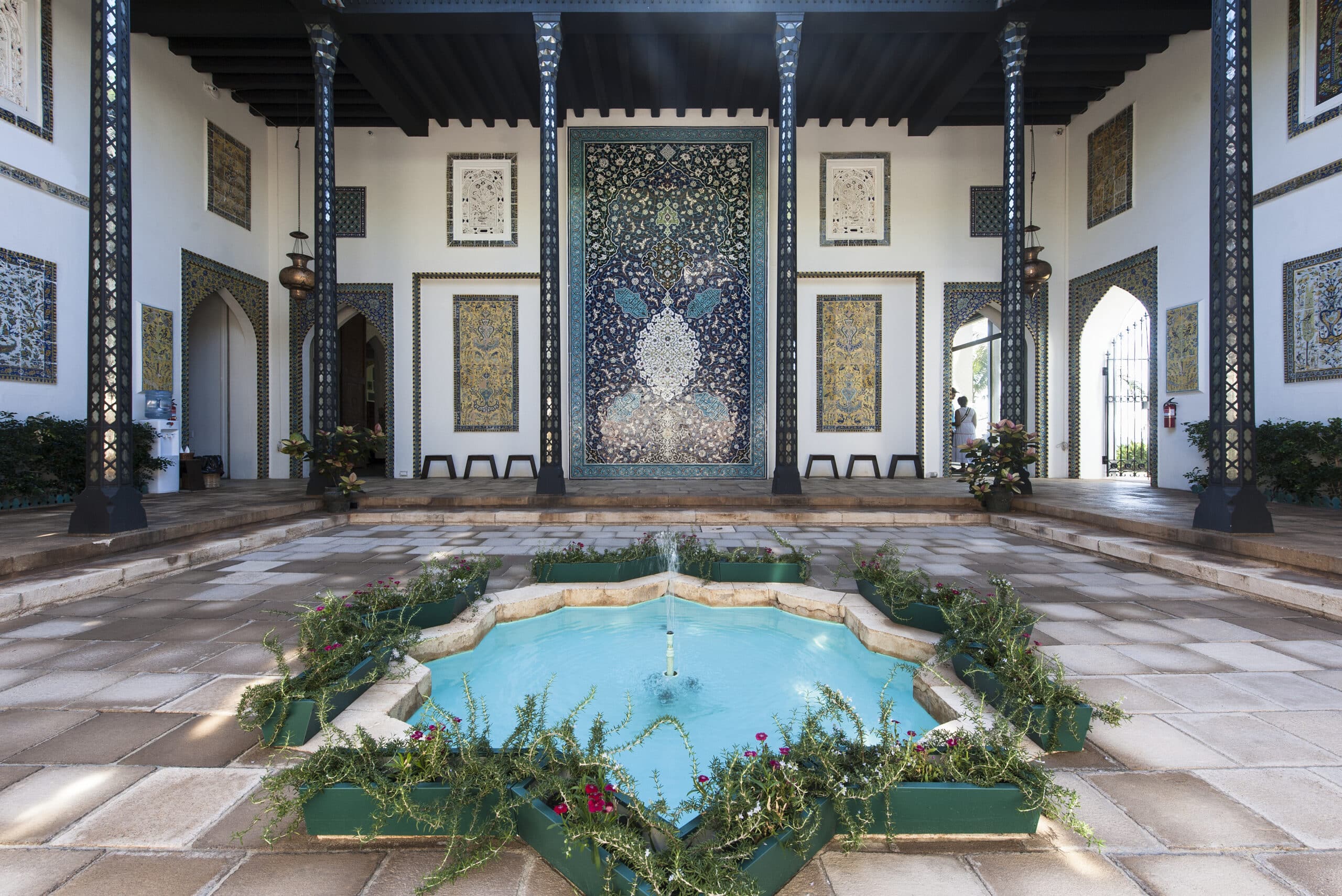When you think of Hawaiʻi, your mind probably drifts to turquoise waves, swaying palms and endless sunshine. But tucked away near Diamond Head in Honolulu is something unexpected: a dazzling mansion filled with centuries-old Islamic art, Moorish architecture and Moroccan tilework that looks like it belongs in a sultan’s palace. This isShangri La, a hidden cultural gem and museum ofIslamic design.
Beginning October 6, Shangri La is opening its gates wider than ever before with a brand-new Saturday tour hosted by the Bishop Museum. The new tour increases opportunities to visit Shangri La, joining the line-up of Thursday and Friday tours run by the Honolulu Museum of Art (HoMA). Kamaʻāina tickets remain $20 for Thursday and Friday tours from HoMA and $25 for Saturday tours from Bishop Museum, while general admission for non-residents is $45. Starting September 4, tickets will be released monthly, on the first Thursday of every month at 10 a.m. HST, on the Shangri La website. The new schedule replaces the previous quarterly release, making it easier for last-minute planners to snag a spot. Book your tickets early; they go fast.
A Heiress, a Honeymoon and a Lifelong Passion
The story of Shangri La begins with Doris Duke — a billionaire heiress to a tobacco fortune, philanthropist, and world traveler born in 1912. In 1935, during a honeymoon trip around the world, Duke was captivated by the intricate tilework, lush gardens and serene courtyards of the Islamic architecture she encountered in North Africa, the Middle East, and South Asia — particularly in Iran, India, and Egypt.
When she began designing her dream home in Honolulu, she fused these artistic traditions with Hawaiʻi’s natural beauty. Over the next several decades, Duke collected more than 4,000 pieces of Islamic art and design, transforming her private residence into a living museum of global culture — complete with a Mughal-inspired bedroom, Syrian tile panels and Moroccan courtyards that feel lifted from a fairytale.
From Private Sanctuary to Public Treasure
When Doris Duke passed away in 1993, she left behind more than a home — she left a mission. In her will, she gifted Shangri La and its extraordinary collection to the Doris Duke Foundation for Islamic Art, ensuring it would be preserved and shared with the public. In 2002, the estate opened its doors for guided tours, inviting visitors to experience this one-of-a-kind art and architecture.
What makes Shangri La so unique isn’t just its world-class collection — it’s the setting. With the Pacific shimmering at its doorstep and the cliffs of Oʻahu’s southern coast rising behind it, the ornate calligraphy, vivid ceramic mosaics and hand-carved wooden mashrabiya screens feel even more enchanting. It’s the last thing you expect on an island known for its iconic surf and bountiful lūʻau, but that’s exactly what makes it unforgettable.
Visiting Shangri La
Tours depart from either HoMA (for Thursday and Friday tours) or Bishop Museum (for Saturday tours). Every 75-minute tour includes round-trip shuttle transportation and admission to Shangri La. And here’s a feel-good detail: all net proceeds from the tours support arts programming at both HoMA and Bishop Museum, reinvesting directly into Hawai‘i’s cultural community.
Whether you’re marveling at a jewel-toned courtyard, tracing the curves of centuries-old calligraphy or soaking up the ocean views from the lanai, you’ll find yourself transported far beyond the shoreline.
Doris Duke didn’t just collect art — she built a home to honor it, and in doing so, created a bridge between two worlds. Today, thanks to the combined efforts of HoMA and Bishop Museum, that bridge spans wider than ever. All you have to do is step across.




















